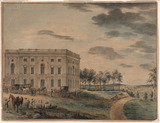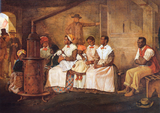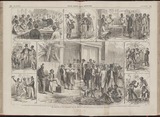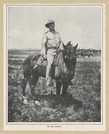
A collection of primary source readings for American History to 1877.
- Subject:
- U.S. History
- Material Type:
- Module
- Author:
- Columbus State Community College
- Date Added:
- 07/25/2019

A collection of primary source readings for American History to 1877.

A collection of primary source readings for American History to 1877.

A collection of primary source readings for American History to 1877.

A collection of primary source readings for American History to 1877.

A set of primary sources to accompany The American Yawp vol. II

A collection of primary source readings for American History since 1877.

A collection of primary source readings for American History since 1877.

A collection of primary source readings for American History since 1877.

A collection of primary source readings for American History since 1877.

A collection of primary source readings for American History since 1877.

A collection of primary source readings for American History since 1877.

Presidents Washington ($1), Lincoln ($5), Jackson ($20), and Grant ($50) all appear on currency. But what about this guy Alexander Hamilton on the ten-spot? How did he get there? A sawbuck says you'll know the answer after reading this piece.

This textbook examines U.S. History from before European Contact through Reconstruction, while focusing on the people and their history. Prior to its publication, History in the Making underwent a rigorous double blind peer review, a process that involved over thirty scholars who reviewed the materially carefully, objectively, and candidly in order to ensure not only its scholarly integrity but also its high standard of quality. This book provides a strong emphasis on critical thinking about US History by providing several key features in each chapter. Learning Objectives at the beginning of each chapter help students to understand what they will learn in each chapter. Before You Move On sections at the end of each main section are designed to encourage students to reflect on important concepts and test their knowledge as they read. In addition, each chapter includes Critical Thinking Exercises that ask the student to deeply explore chapter content, Key Terms, and a Chronology of events.

Veterans of the Fifth Corps considered the night march of May 7-8 one of their worst military experiences. "The column would start, march probably one hundred yards, then halt, and just as the men were about to lie down, would start again, repeating this over and over..."

https://archive.org/details/MartinLutherKingIHaveADreamSpeech

The Indian Removal Act was signed into law by President Andrew Jackson on May 28, 1830, authorizing the president to grant lands west of the Mississippi in exchange for Indian lands within existing state borders. A few tribes went peacefully, but many resisted the relocation policy. During the fall and winter of 1838 and 1839, the Cherokees were forcibly moved west by the United States government. Approximately 4,000 Cherokees died on this forced march, which became known as the "Trail of Tears."

The U.S. Government used treaties as one means to displace Indians from their tribal lands, a mechanism that was strengthened with the Removal Act of 1830. In cases where this failed, the government sometimes violated both treaties and Supreme Court rulings to facilitate the spread of European Americans westward across the continent.

Like Hamilton’s other major state papers, the “Report on Manufactures” is distinguished not so much by originality of thought as by the cogency and persuasiveness of its arguments, its far-reaching implications, and its ennobling vision of the destiny of the United States. Indeed, it contains few, if any, specific proposals that even the most enthusiastic supporters of Hamilton could maintain were original. In this sense, the Report is as much a product of its times as the creation of its author, for many of the ideas which it contains had been debated for decades on both sides of the Atlantic. During the second half of the eighteenth century western Europe and America provided in varying degrees an economic climate which was conducive to discussions of questions concerning national economic growth and the role of manufacturing in the economy.

As strange as it seems today, most Americans didn’t embrace the goal of democracy for most of American history. If they had, then it wouldn’t have been such a struggle for most people to attain citizenship and voting rights. The Federalists argued that those who owned the country should run it because it was they who paid property taxes. But the democratic tide turned with Thomas Jefferson’s election in 1800 and gained momentum in the early 19th century. French travel writer Alexis de Tocqueville observed that America “had arrived at a state of democracy without having to endure a democratic revolution” such as the tumultuous French Revolution. As noted in the Ratcliffe’s optional deep dive below, this gradual democratic transition traced to the tradition of representative government in the colonial era, the widespread availability of land that qualified freeholders to vote, and the liberalizing legacy of the American Revolution’s equal-rights ideology. Among white males, mass democracy was mostly in place by the Jacksonian Era, named for the two-term presidency of Andrew Jackson, aka “Old Hickory.” Reviled as a demagogue by some and beloved by others, Jackson catered to the very voters who had won the vote in the decades since the Revolution. He put such a decisive stamp on the 1820s and ’30s that they are often called the Age of Jackson. It’s also called the “Era of the Common Man” because it was when American politics adjusted to the implications of an enlarged electorate, becoming necessarily populist.

Andrew Jackson’s two terms as President (1829-1837) included many tests of the American Democratic system. Jackson vetoed twelve pieces of legislation, including the Maysville Road Bill and the rechartering of the Second Bank of the United States. Jackson also oversaw Indian Removal and weathered South Carolina’s nullification crisis over what the Carolinians called the Tariff of Abominations. Jackson’s presidency has been known as the “era of the common man,” a time when voting rights were extended to all white men in almost every state. This era also saw the rise of American Democratic Party. However, recent scholarship argues that the 1830s was a time of staunch nationalism as the Southern cottonocracy spread its plantation system further west. The purpose of this primary source set is to weigh both sides of the argument and decide whether Jackson’s presidency was a time of democracy, a time of rising nationalism or a combination of the two.